10 September 2012
I’m sitting on a slab of marble several feet away from the spot where Prince Siddhartha Guatama reached enlightenment and became the Buddha. Before me a descendant of the Bodhi tree reaches to the sky, planted on the spot where the original stood. Beneath it is the diamond throne, a sandstone slab marking where Buddha sat, place there by emperor Ashoka. The soothing sound of monks chanting mantras surrounds me. This place is so peaceful.
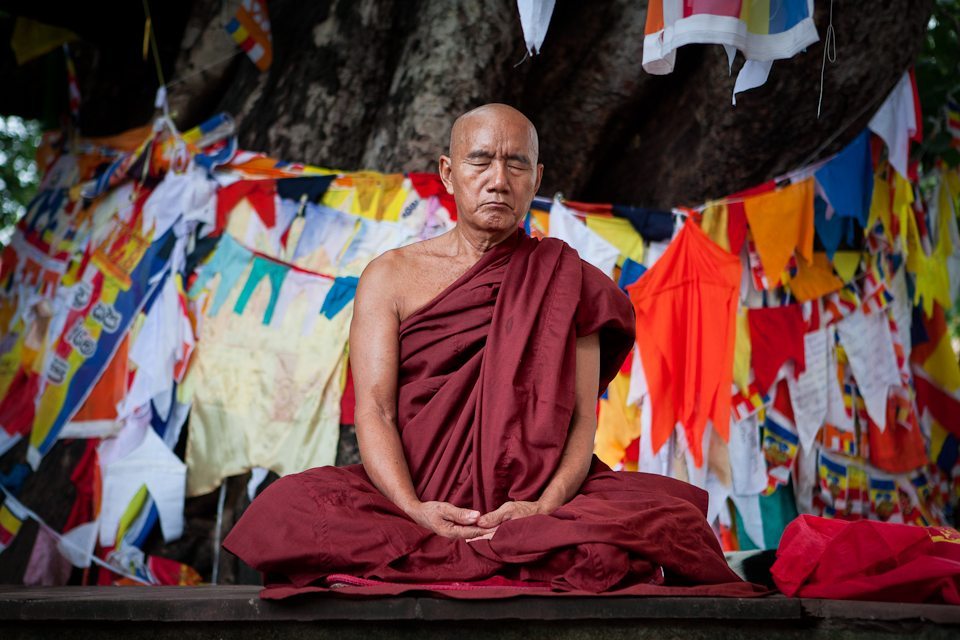
Meditating Monk
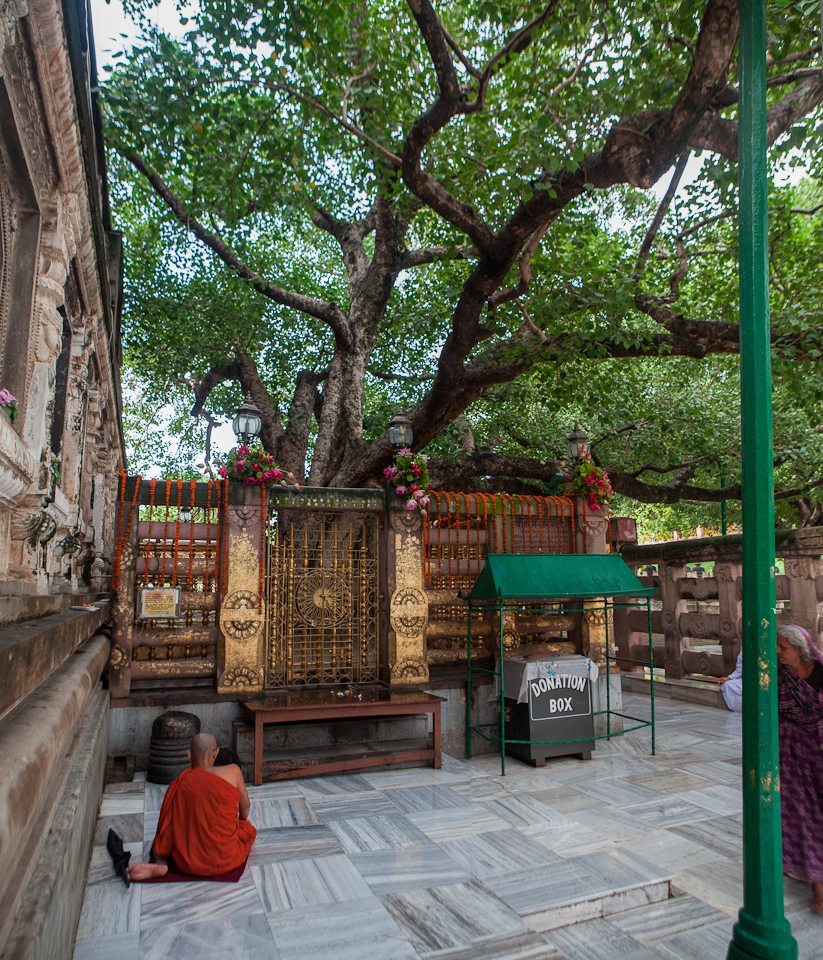 The slab next to the Bodhi Tree reads:
The slab next to the Bodhi Tree reads:
Bodhi Palanka (The Place of Enlightenment)
Prince Siddhartha attained Buddhahood (full enlightenment) in the year 623 B.C. on the Vasakha full moonday sitting under this peepul (bodhi) tree. The Vajrasana or the Diamond Throne which is under this bodhi tree is the central place of worship.
I arrived in Gaya at 10 P.M. after an impromptu train ride out of Varanasi. This mean disorder a-plenty and a little finagling on my end to secure a berth in a train car that wasn’t too deplorable. A 20 minute tuk-tuk ride brought me out of Gaya and plunged me into the inky darkness of the Bihar countryside.
Waking at sunrise I pick my way through muddy streets, stepping over sleeping dogs and skirting around various livestock to reach the Mahabodhi Temple. Mahabodhi is a big deal – the holiest location for the Buddhist faith. Pilgrimage is the name of the game, and I aim to beat most of the pilgrims to the temple while the light is still soft and the grounds are still quiet. The temple complex radiates a hallowed tone, glistening in the last drips of a night shower. The crimson sandstone walkways cut across the well-tended grass plots, leading the pious to the ancient temple.
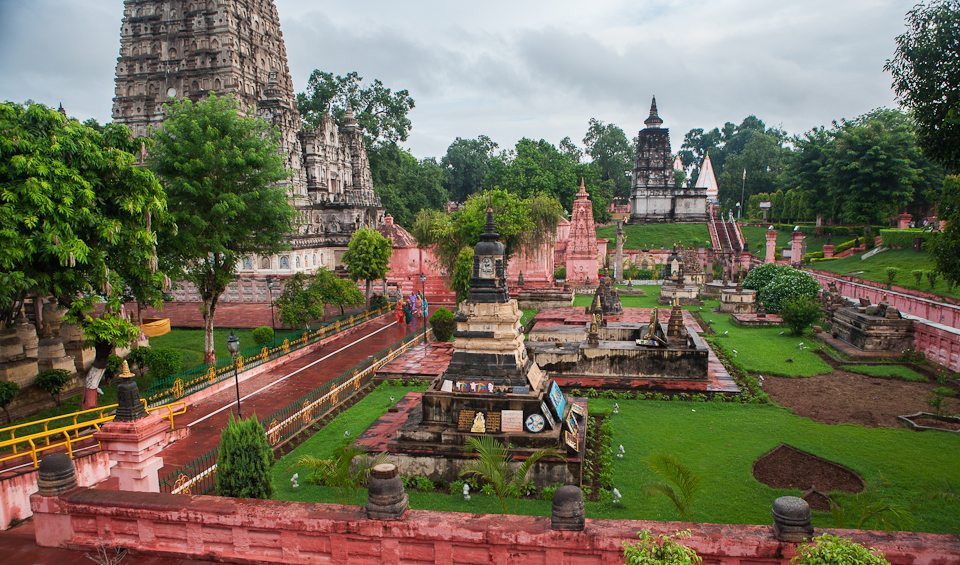
The Mahabodhi Temple Grounds
The temple complex is nearly empty, and as I approach the temple the Buddhist mantras chanted by the devout reach my ears. Early rising pilgrims are making their way to the interior to offer their prayers and small plates covered in an assortment of flowers. Before the Buddha, the offerings stack higher and higher and the number of pilgrims increases. The environment is changing from tranquil to tense as these pious people vie for a plot of tile to render their prayers. The once vacant offering room swells with boisterous crowd after crowd which means it is time for me to leave. I am surprised at the behavior of these visitors, and loathe their blatant disrespect for the very thing to which they offer their prayers.
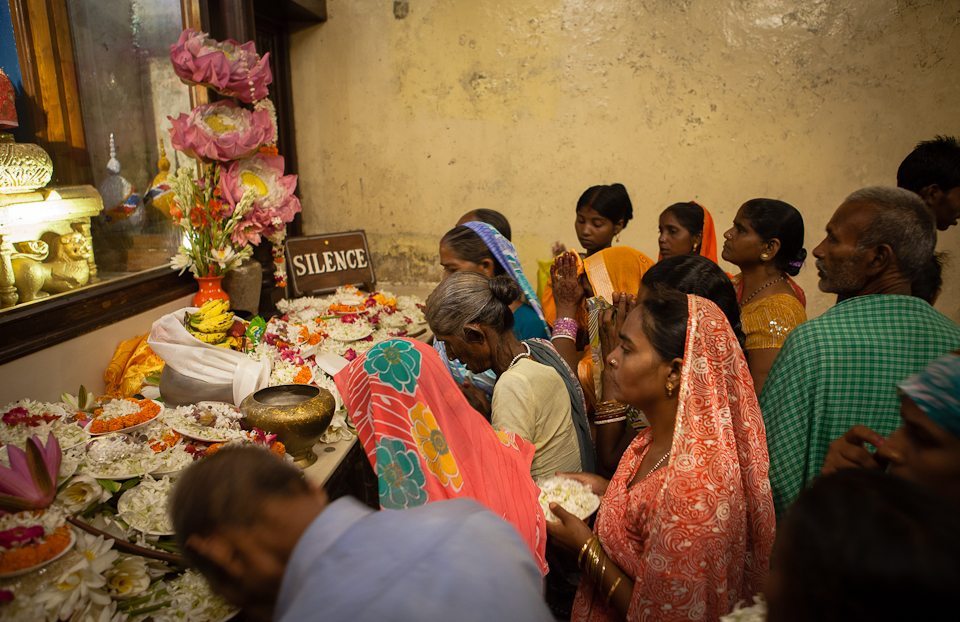
Offerings in the Mahabodhi Temple
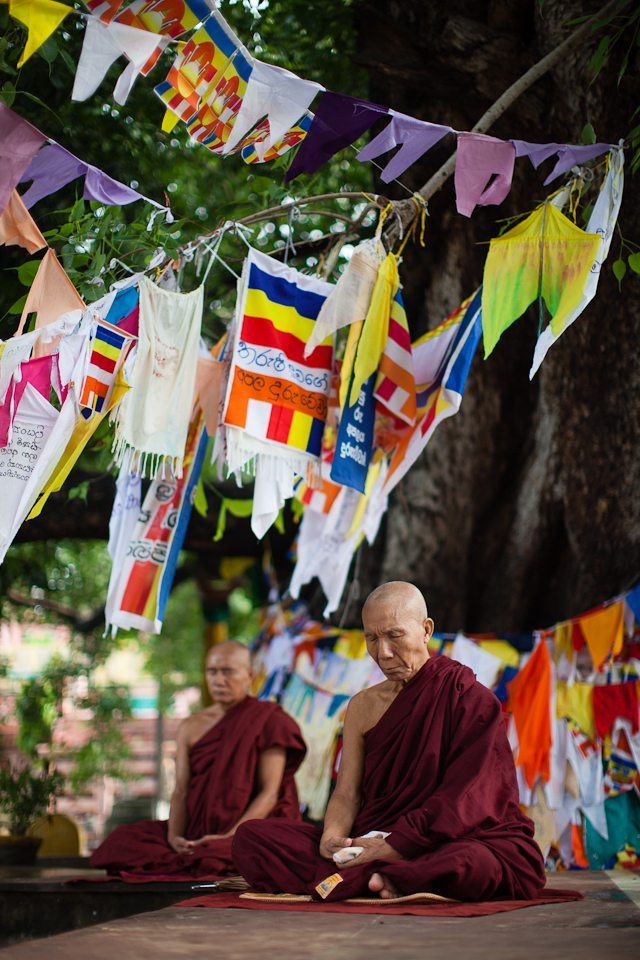
The temple complex is large and I try to lose myself in the quiet corners. Here I can get away from the crowds. I can beat a crowd, but it seems I will never fully avoid them. Our interests and paths collide too often. But if I can lose the crowds for even just 15 minutes, I will find relief. Relief is found in these quiet corners. Monks sit in meditation. I know not what goes on in their minds – what they are thinking during these long periods of stillness.
They are barely breathing. They are incredibly still. Their expression is at times of peace, at times pensive, and always serious. Prayer flags flap in the wind, surrounding a pair of monks swathed in sanguine. Across the gentle breeze that stirs those prayer flags comes the chirping of birds and the occasional chanting of a mantra.
Moving along through the temple complex I find another form of meditation. Monks pay their respects through prostrations. They perform hundreds of them, kneeling down and sliding along a wooden board towards a lotus flower. The boards are smooth and worn, no doubt from thousands of these prostrations. They perspire and they purify. They prepare for meditation.
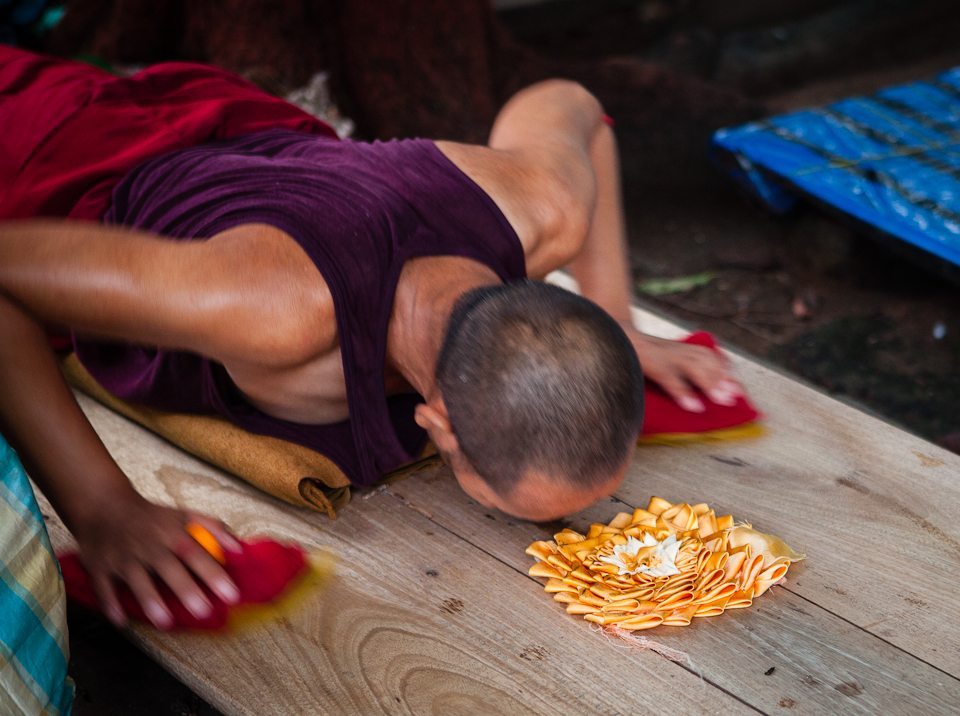
Morning Prostrations
And yet there are more monks. They are spread out among the complex, and if I look hard, I can find them. This one sits in orange robes among elaborately carved stupas. Another walks down a corridor, spinning the prayer wheels – always in a clockwise direction. I pass one monk, walking with an umbrella slung over his arm and am delighted when he gives me the slightest smile and a nod. I wonder if my visage entertains him as much as his does I. Certainly, I stand out among the crowd of dark haired, dark skinned pilgrims clad in various colored robes. In fact, I’m the only white man in the entire area, to my knowledge.
The sun climbs higher into the sky and more and more people fill the complex. A large group of Sri Lankans has just arrived and they are sitting on all sides of me, on the marble. We don’t talk. We do smile and nod. They are taking a short break from walking around the complex and I am sitting, back against a stone railing, taking it all in. The presence of the early morning, of bird chirping, of monks chanting, has diminished, and the time for my exit grows near.
Moving around and towards the front of the temple area I come across one pilgrim isolated from the rest. Clad in a deep orange and against a yellow undergarment, he sits in repose with a book and a bright blue sack. He appears scholarly and wise. He is old, with short grey whiskers and a shiny bald head, yet he seems powerful. His gaze is strong-willed and his arms are sinewy. I gesture towards my camera and he nods, placing his hands together in a display of reverence for this holy place. I then lift the camera to my eye and snap the image.
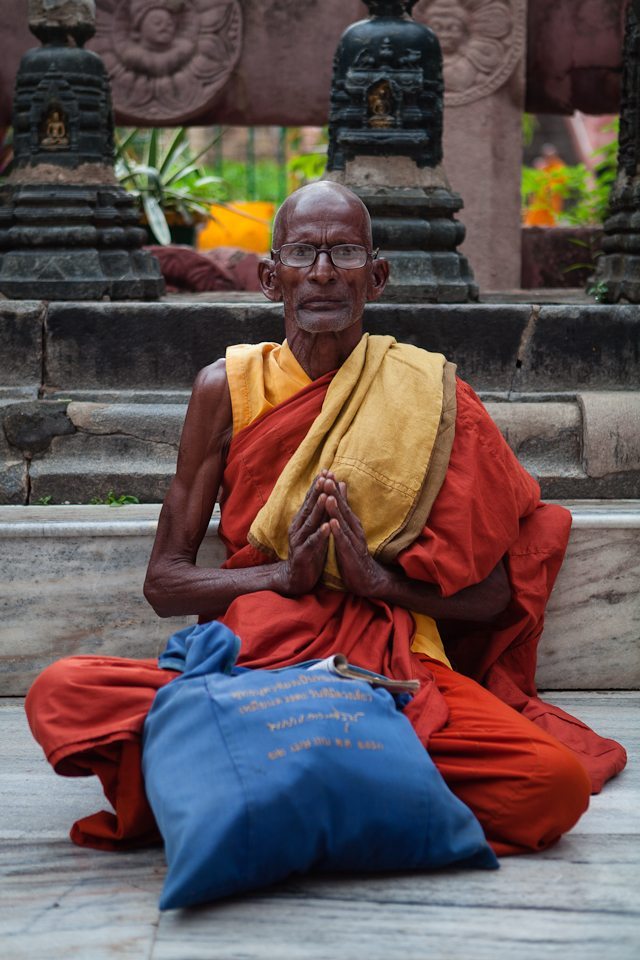
I’m gracious for the solitude I found that morning, and my appreciation for that solitude grows 100 fold as I exit the temple complex. The tumultuous bustle of “holy tourism” leaps at me from every turn in place of the quiet walkways that greeted me earlier.
I’m back to fending for myself, back to avoiding the gaze of eager salesmen peddling shoddy crafts, and zig-zagging through and around the poor and diseased who will never relent. I cannot feed them all. A gesture to one will ensure a difficult passage by the rest. Perhaps this is my rationalization for a lack of pure altruistic tendencies. I do feel pangs for these people, but there are not one or two of them here. There are droves. The children are the most persistent, and sometimes follow me for as much as an hour.
As I depart Mahabodhi I am quickly reminded that it is still monsoon season as the clouds open and pour down and abundance of water. I have no umbrella, and I do not wish to duck into a salesmen’s stall where I have no intention of purchasing his wares. There is, however, a man standing beside a vacant chair under a makeshift tarp covering that provides shelter from the storm. The chair is no ordinary chair – it is a barber’s chair. Feeling ready for a new experience, I decide to wait out the storm productively by getting a street-side shave.
This shave is my first in India, and would not be the last. The dynamic is fantastic. The barber is absolutely astonished, pleased, and excited to have possibly the only Western man in the area sitting in his chair asking for the service of his blade. Under my watchful eye the smiling barber produces a fresh packaged blade and places it into his shavette. My initial trepidation with this experience is not concerning his skills as a barber. I’m concerned about sanitation, and seeing that fresh blade makes me very very happy. With a dollop of shave cream and a brush the barber lathers up my cheeks, my chin, and my neck and then goes to work. Small, light, deliberate strokes of the razor slowly reveal my clean-shaven skin from under the blanket of shaving cream. Not a single cut on my face, and the barber makes his second round to get even closer. I just got a straight-razor shave on the side of a street in India that easily outdoes and barbershop shave I’ve had in the United States.
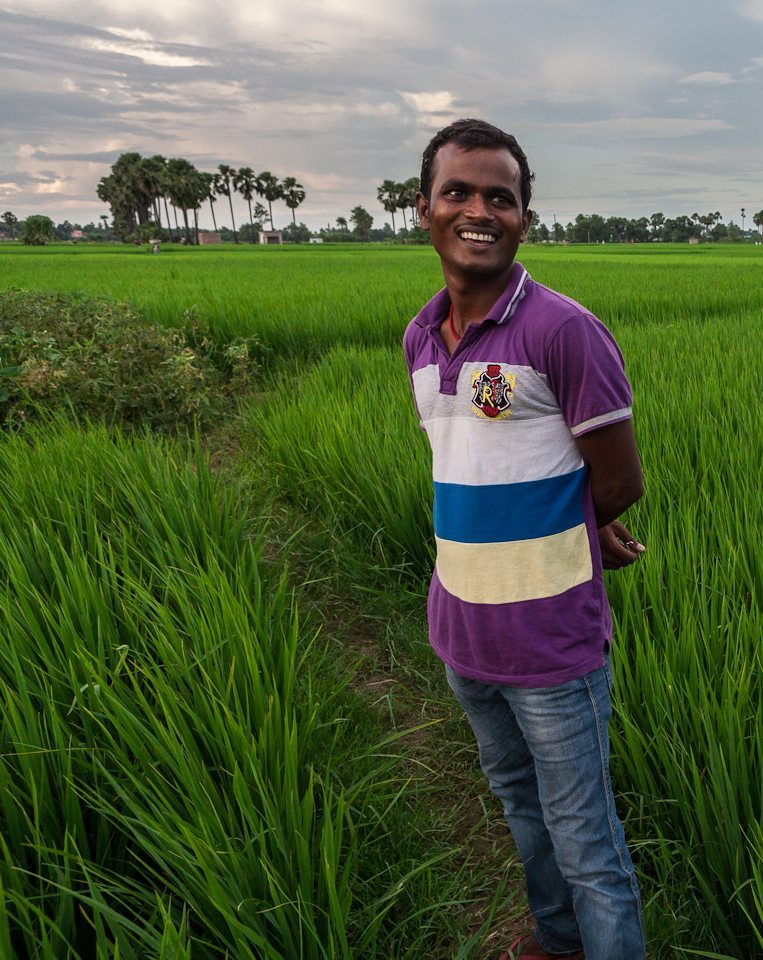
At the “barbershop” a small crowd has grown, watching every flick of the razor and every emotion on my face. As if on cue, the barber finishes my shave and the rain stops. Perfect timing. A young Indian man wearing a purple polo and blue jeans approaches and introduces himself to me as Pawan Kumar. Pawan is interested in who the hell this lone white man is getting a shave at his friends street-side barber chair in Bodhgaya, India. We have make some small talk about my occupation, education, family, and previous travels before he offers to show me more of Bodhgaya. Camera slung over one shoulder and tripod over the other, I hop on the back of Pawan’s motorcycle and off we go.
Pawan is thrilled to guide me through his town and we weave through tuk-tuks and light traffic in this rural village, hopping from monastery to monastery. There are many Buddhist monasteries here, clustered as close as possible to the holy Mahabodhi temple. Each country with a large Buddhist following has built a monastery in their traditional architectural style. The Japanese have a pagoda shaped temple, the Thai temple is adorned with golden tiles on a sloping roof. The mix of styles is an eclectic Asian smorgasbord. I can see the differences in the Buddhist traditions of each country and I have only to walk one hundred yards. Our journey of monastic discovery ends with the big Buddha – an 80 ft tall Buddha sitting in meditation pose on a lotus. The Buddha towers above us on a backdrop of blue sky, looking out over the walkways and gardens before him.
Just outside of the great Buddha statue I pause before climbing back on the motorbike as I am drawn to a juice stand where a man is squeezing oranges and pomegranates for fresh juice. I buy a glass of pomegranate juice and Pawan and just sit in front of the giant Buddha statue and people watch while we enjoy our sweet beverage.
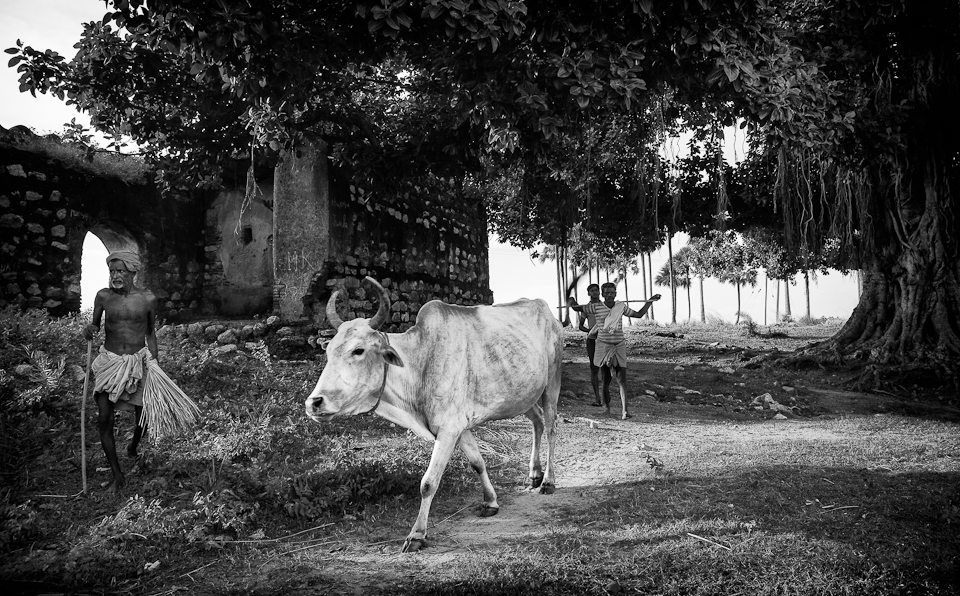
Cattlemen at the Saraswati Temples
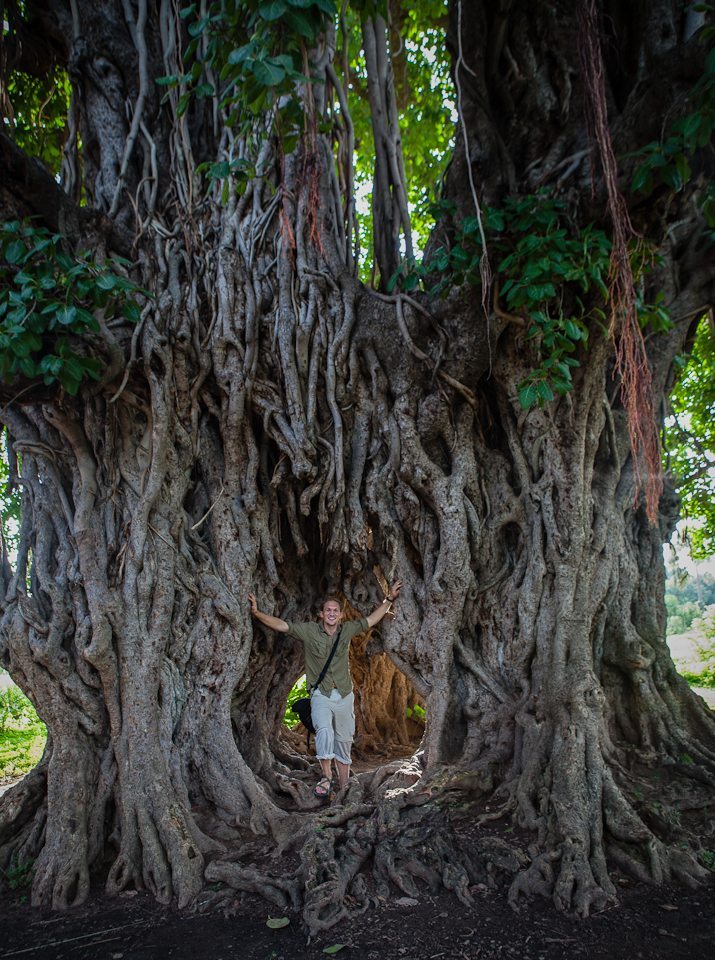 Having seen all that I know to visit I ask Pawan, “Show me something special, that most travelers don’t get to see.” Pawan starts driving and as bump and jolt along a dirt road to the outskirts of town the traffic diminishes and tuk-tuks are replaced by villagers and cattle. Pawan’s motorbike is perfect for this countryside drive – we’ve left the crude road for an even rougher foot trail through the fields of Bihar. A field, a village, another village, a cow, through five children singing and playing, and around women carrying things on their heads, we navigate through the countryside.
Having seen all that I know to visit I ask Pawan, “Show me something special, that most travelers don’t get to see.” Pawan starts driving and as bump and jolt along a dirt road to the outskirts of town the traffic diminishes and tuk-tuks are replaced by villagers and cattle. Pawan’s motorbike is perfect for this countryside drive – we’ve left the crude road for an even rougher foot trail through the fields of Bihar. A field, a village, another village, a cow, through five children singing and playing, and around women carrying things on their heads, we navigate through the countryside.
I learn that our destination is a riverbank shaded by a large banyan tree. Pawan likes to come here in the afternoons to sit in the shade and relax and make offerings at the ancient Saraswati temples that stand a stones throw from the giant banyan. This is very much a place for locals, and the men already sitting in the area are asking Pawan who I am and why I am here. They are curious as to what could possibly interest me here, away from the main tourist attractions of the town. Pawan describes me in a favorable light, as one traveler interested in knowing a little more about the culture than most, and the men smiles and nod my way. Pawan speaks very good English – these countryside men speak only their dialect of Hindi. This little spot we’ve found is fantastic. I can laze about in the grass, basking in the sun and writing in my journal. The Indian men are chatting peacefully, the river rushes by us, and an occasional cattleman with his livestock pass along the trail towards the nearest village. It really is fantastic.
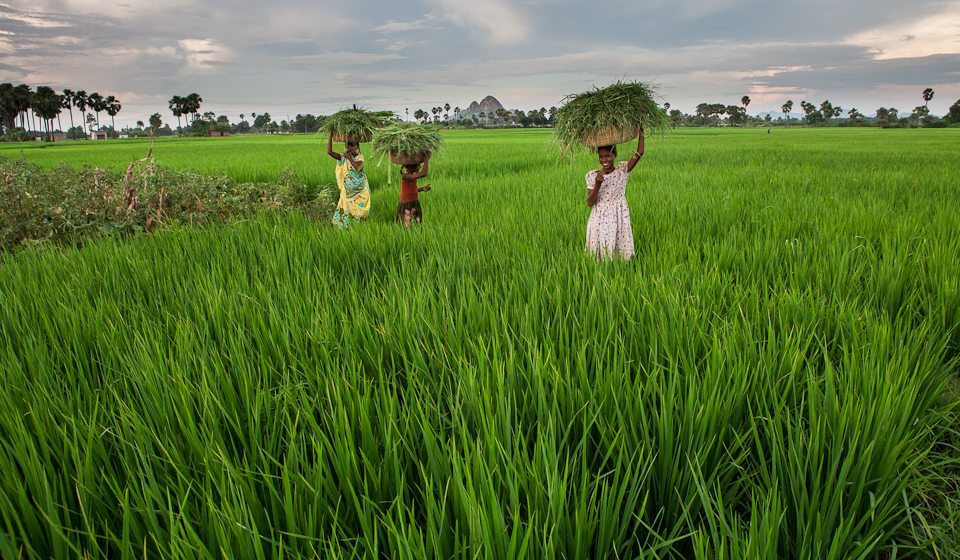
Women in the Field
As the sun dropped back to the horizon Pawan drove me back through incredibly green rice paddies to the town. The paddies are so green, quintessentially lush. We are at the end of our adventures and Pawan drops me right at the door of Mohammad’s Guesthouse. In return for being such a great guide, and most especially for never trying to sell me anything and never asking for compensation, I handed Pawan 200 Rs.
Mohammad’s Guesthouse is a fantastic place to be. This is one of the very few lodgings in India where I felt my host knew the meaning of service and was really invested in making my stay a comfortable one. Pren is a middle aged Nepali man who runs the guesthouse. He is full of smiles, and make a fantastic Tibetan noodle soup.
My favorite aspect of Mohammad’s Guesthouse is the rooftop. From my rooftop I can sit and watch the people sun setting behind the clouds, the sky changing colors, the workers leaving the rice fields, the children playing and the dogs barking, the women starting their cooking fires, and the occasional surprising glow of a television from within a shanty shack.
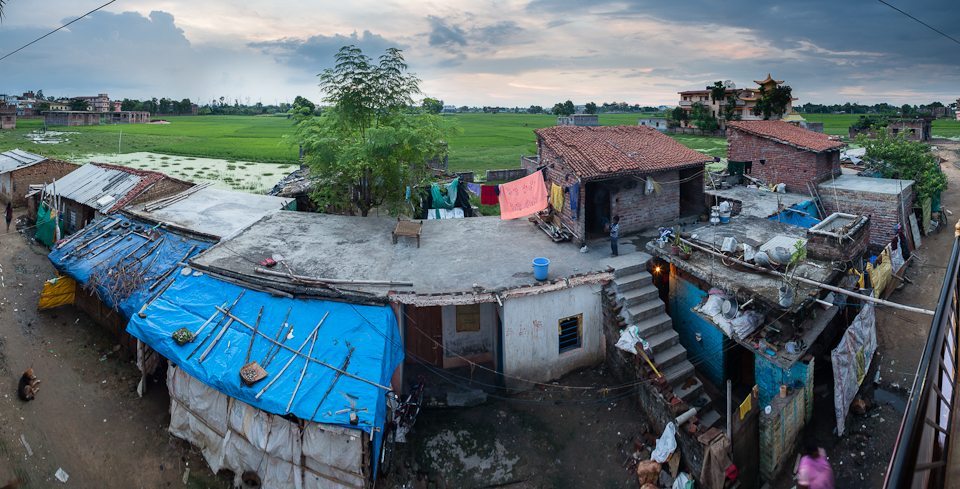
View from Mohammad’s Guesthouse
As far as popular Western tourist locations go, Bodhgaya is off the beaten path. Bodhgaya is perfect for a peaceful 1-2 days stop if you are traveling via train between Varanasi and Kolkata. Bodhgaya is a chance to connect with a spirituality and serenity that is difficult to find in India. I highly recommend it.
Travel Tips
Best Place to Stay: New Mohammad’s Guesthouse (double w/bath 350 Rs/night)
Cheap Eats: Fujiya Green (tent restaurant)
No. 1 Attraction: Mahabodhi temple at dawn
Off The Beaten Path: Find a local to show you some special spots in the countryside
Tuk-tuk from Gaya train station to Bodhgaya: 50 Rs (20 minutes)
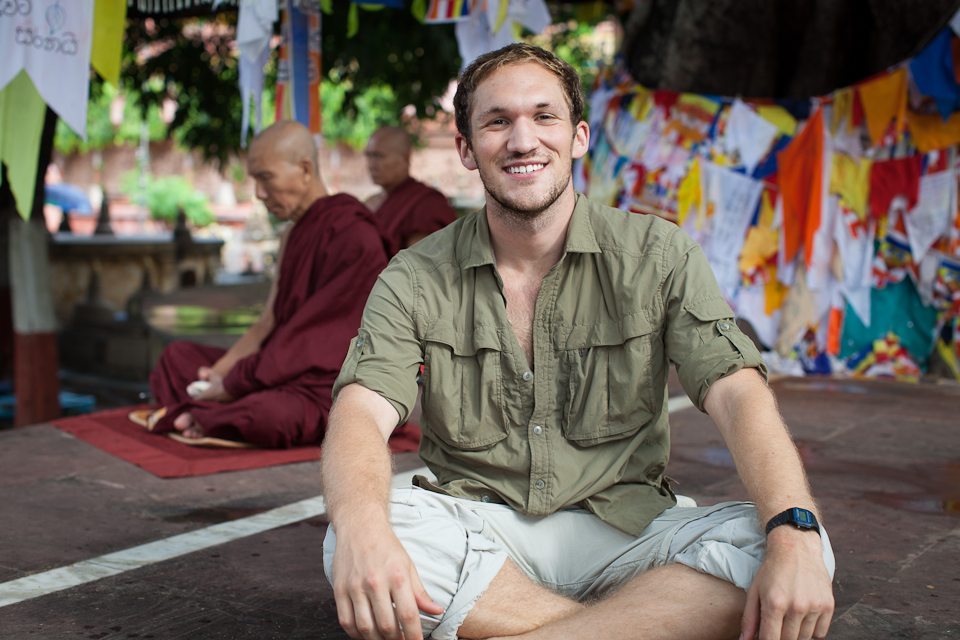
Your Happy Author

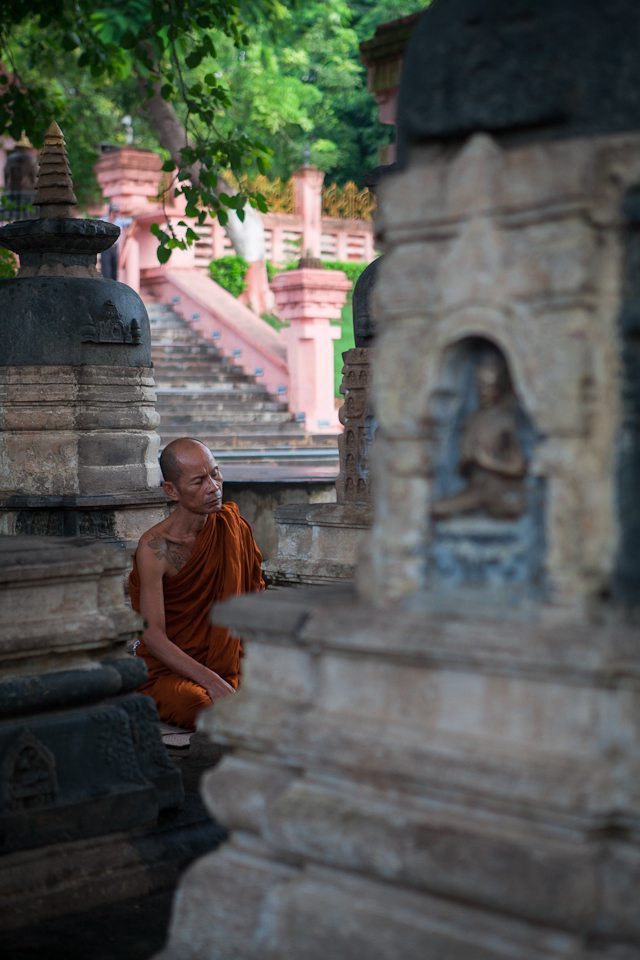
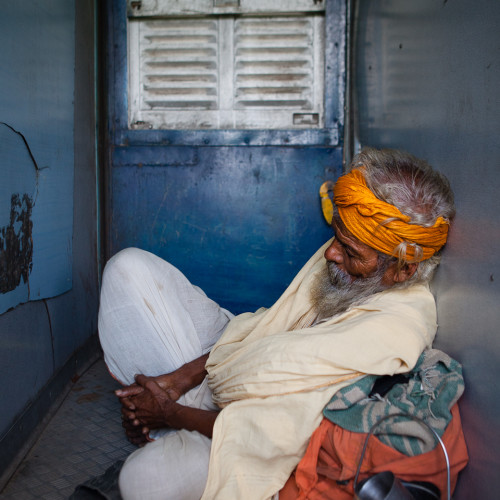
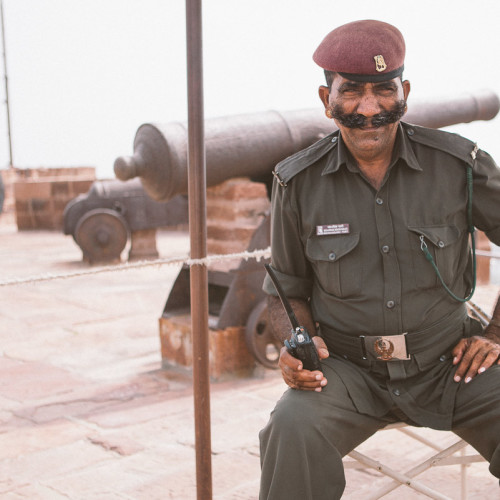
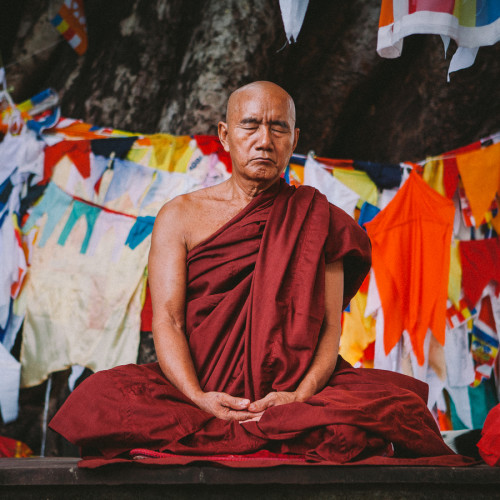
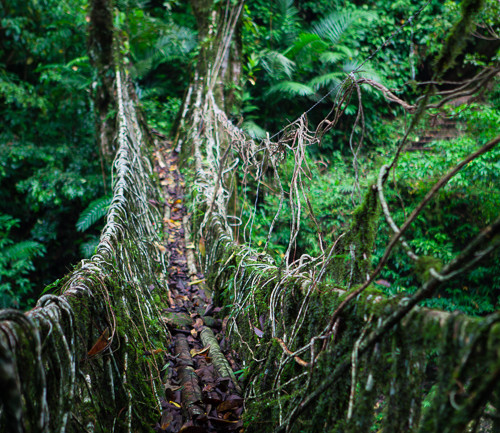
Leave a reply